It looks like you're using an Ad Blocker.
Please white-list or disable AboveTopSecret.com in your ad-blocking tool.
Thank you.
Some features of ATS will be disabled while you continue to use an ad-blocker.
share:
The Start
The year was 1877. The West was nearly won, as the U.S. Calvary and American settlers saw things. The Indians were just about beaten, and from a US perspective, it had been a pretty good war. A year had passed since the defeat of General Custer at the Little Big Horn and the nation had found ways to accept that as a one-off fluke that had it's reasons, but wouldn't likely repeat.
Enter a new problem for the Calvary to solve and one of the last but certainly not least of the Great Leaders of the Native American tribes to stand tall and distinguish himself. The Nez Perce Tribe called it's home Wallowa Valley in Eastern Oregon territory at this point in time and would seem to have been content where they were. The Nez Perce were known as one of the peaceful tribes in North America and believed that would spare them the hardships they watched visited upon other tribes over the course of the Indian Wars. They were mistaken.
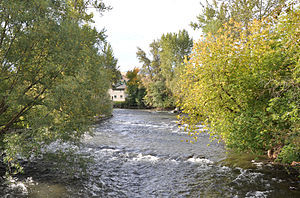
(Wallowa Valley, Or)
After years of various abuses by settlers, it came to a head on June 13, 1877. On this day, 3 young Braves of the Tribe chose to strike back and took their revenge on 3 of the more notorious White Settlers in the area. Soon after, a group of Warriors raided ranches and farms up and down the Salmon River Valley. A line had been crossed. Life had changed for their small Tribe and Chief Joseph knew it.
None of the actions taken by those Braves and Warriors were sanctioned by the Tribe. The Chief knew this wouldn't make a difference though and choices were now very few.
The U.S. Army was immediately mobilized to deal with the 'Indian Uprising'. Thus began one of Americas most daring, courageous and brutal running battles of the entire period. Here is a map of the path of battle as it unfolded.
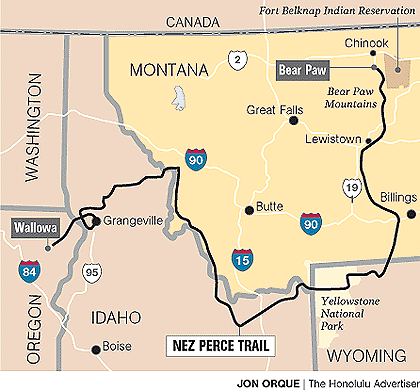
Lest anyone get the idea this was just about the fighting, it was far more than that. Chief Joseph chose to lead his people to Canada and seek a peaceful life North of the US border as the alternative to forced reservation living that his people were offered as their only option following the events described above. The path he was forced to choose took him across some of the most beautiful and most rugged as well as unforgiving land the North American Continent has to offer.
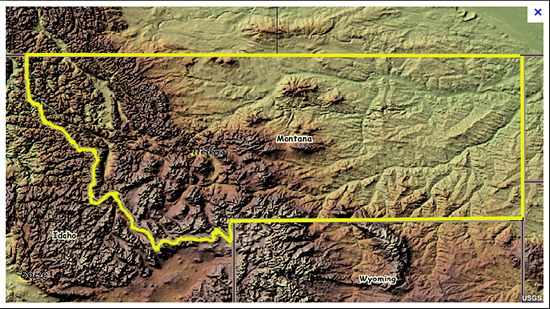
On June 17, the first battle was fought. More than 100 troops from the First Calvary attempted to meet and head off the fleeing Nez Perce. The truce party the Tribe sent to talk with the troops was fired upon which opened the fighting on the spot. 34 Army Soldiers were killed with 0 casualties among the Tribe. You'd find this spot on Highway 95 today, about Mile Marker 227 and roughly 15 miles south of Grangeville, Idaho. A marker and small shelter sits on the spot.
The army wouldn't catch them again until July 11. This time, the Army was better prepared and opened fire with Gattling Guns and Artillery. The Nez Perce were able to break contact and elude the Army once again and left them behind. The location as one would find it today is on Idaho Hwy 13 about 2 miles south of Stites, Idaho.
Attempting to evade pursuit, Chief Joseph guided his people south, following the Bitterroot River over about 100 miles of what is now known at US Highway 93 in Montana. The band then turned east and came to settle for a short time in a Valley known as Big Hole, Montana. Joseph ressured his people "War is Quit." He believed he had broken contact for good and was clear of the fighting. He was badly mistaken for a second time.
Elements of the historic 7th Calvary under the command of Colonel John Gibbon (Also a party to the Battle of the Little Bighorn and a late arrival to Custer's Last Stand) had camped only a few miles away from where the Chief believed he and his people were safe. In the early morning hours of August 9, they launched a surprise attack on the sleeping camp. After taking serious losses from this rude surprise, the Nez Perce rallied and fought back hard. They managed to drive Gibbon to a defensive line and held his troops in place by sniper fire while the main body of the Tribe was able to break contact yet again and slip away. Although considered a victory for the Nez Perce, this was the first battle to draw grim casualties from both sides and bring serious pain to the two sides fighting.

(John Gibbon)
The Big Hole battlefield is a remote site to this day, with self guided tours to the area.
The Tribe found itself once again fleeing South toward the newly formed Yellowstone National Park. The troops under General O.O. Howard in close pursuit the entire way. At this point, the fighting turned especially bitter and brutal. Tribal war parties raided settlers and killed those who resisted. The Army for it's part, came upon a group of Tribal elders, left behind from the main body and scalped, then killed them. Whatever it started as, the running fight had become a true run for their lives and future at this point and all knew it.
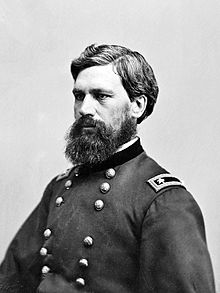
(Gen. Oliver Otis Howard)
Among the next clashes came one to demonstrate that not everything in these wars was brutality and bloody and clever guerilla war tactics were something practiced and well known to the Tribal warriors. At Camas Meadows, the Nez Perce took the initiative and ambushed the Army. In the process, they 'liberated' 200 pack animals which set the forces of General Howard back a bit and broke his momentum in the pursuit.
The next major conflict came at Canyon Creek Field on Sept 13, between Billings and Butte, Montana. This time, the Army's forces were superior and the battle was not a question for outcome. While the Tribe once again managed to escape intact, they took heavy losses of both men and horses. This location has been made into a small National Historical Park just outside Laurel, Montana.
The Chief and his people were hurting, tired, and desparate. By this time, they had been chased and run across range after range of the formidable Northern Rocky Mountains and were just about ready for their reward. Canada.
They still had much to face.......
The year was 1877. The West was nearly won, as the U.S. Calvary and American settlers saw things. The Indians were just about beaten, and from a US perspective, it had been a pretty good war. A year had passed since the defeat of General Custer at the Little Big Horn and the nation had found ways to accept that as a one-off fluke that had it's reasons, but wouldn't likely repeat.
Enter a new problem for the Calvary to solve and one of the last but certainly not least of the Great Leaders of the Native American tribes to stand tall and distinguish himself. The Nez Perce Tribe called it's home Wallowa Valley in Eastern Oregon territory at this point in time and would seem to have been content where they were. The Nez Perce were known as one of the peaceful tribes in North America and believed that would spare them the hardships they watched visited upon other tribes over the course of the Indian Wars. They were mistaken.

(Wallowa Valley, Or)
After years of various abuses by settlers, it came to a head on June 13, 1877. On this day, 3 young Braves of the Tribe chose to strike back and took their revenge on 3 of the more notorious White Settlers in the area. Soon after, a group of Warriors raided ranches and farms up and down the Salmon River Valley. A line had been crossed. Life had changed for their small Tribe and Chief Joseph knew it.
None of the actions taken by those Braves and Warriors were sanctioned by the Tribe. The Chief knew this wouldn't make a difference though and choices were now very few.
The U.S. Army was immediately mobilized to deal with the 'Indian Uprising'. Thus began one of Americas most daring, courageous and brutal running battles of the entire period. Here is a map of the path of battle as it unfolded.

Lest anyone get the idea this was just about the fighting, it was far more than that. Chief Joseph chose to lead his people to Canada and seek a peaceful life North of the US border as the alternative to forced reservation living that his people were offered as their only option following the events described above. The path he was forced to choose took him across some of the most beautiful and most rugged as well as unforgiving land the North American Continent has to offer.

On June 17, the first battle was fought. More than 100 troops from the First Calvary attempted to meet and head off the fleeing Nez Perce. The truce party the Tribe sent to talk with the troops was fired upon which opened the fighting on the spot. 34 Army Soldiers were killed with 0 casualties among the Tribe. You'd find this spot on Highway 95 today, about Mile Marker 227 and roughly 15 miles south of Grangeville, Idaho. A marker and small shelter sits on the spot.
The army wouldn't catch them again until July 11. This time, the Army was better prepared and opened fire with Gattling Guns and Artillery. The Nez Perce were able to break contact and elude the Army once again and left them behind. The location as one would find it today is on Idaho Hwy 13 about 2 miles south of Stites, Idaho.
Attempting to evade pursuit, Chief Joseph guided his people south, following the Bitterroot River over about 100 miles of what is now known at US Highway 93 in Montana. The band then turned east and came to settle for a short time in a Valley known as Big Hole, Montana. Joseph ressured his people "War is Quit." He believed he had broken contact for good and was clear of the fighting. He was badly mistaken for a second time.
Elements of the historic 7th Calvary under the command of Colonel John Gibbon (Also a party to the Battle of the Little Bighorn and a late arrival to Custer's Last Stand) had camped only a few miles away from where the Chief believed he and his people were safe. In the early morning hours of August 9, they launched a surprise attack on the sleeping camp. After taking serious losses from this rude surprise, the Nez Perce rallied and fought back hard. They managed to drive Gibbon to a defensive line and held his troops in place by sniper fire while the main body of the Tribe was able to break contact yet again and slip away. Although considered a victory for the Nez Perce, this was the first battle to draw grim casualties from both sides and bring serious pain to the two sides fighting.

(John Gibbon)
The Big Hole battlefield is a remote site to this day, with self guided tours to the area.
The Tribe found itself once again fleeing South toward the newly formed Yellowstone National Park. The troops under General O.O. Howard in close pursuit the entire way. At this point, the fighting turned especially bitter and brutal. Tribal war parties raided settlers and killed those who resisted. The Army for it's part, came upon a group of Tribal elders, left behind from the main body and scalped, then killed them. Whatever it started as, the running fight had become a true run for their lives and future at this point and all knew it.

(Gen. Oliver Otis Howard)
Among the next clashes came one to demonstrate that not everything in these wars was brutality and bloody and clever guerilla war tactics were something practiced and well known to the Tribal warriors. At Camas Meadows, the Nez Perce took the initiative and ambushed the Army. In the process, they 'liberated' 200 pack animals which set the forces of General Howard back a bit and broke his momentum in the pursuit.
The next major conflict came at Canyon Creek Field on Sept 13, between Billings and Butte, Montana. This time, the Army's forces were superior and the battle was not a question for outcome. While the Tribe once again managed to escape intact, they took heavy losses of both men and horses. This location has been made into a small National Historical Park just outside Laurel, Montana.
The Chief and his people were hurting, tired, and desparate. By this time, they had been chased and run across range after range of the formidable Northern Rocky Mountains and were just about ready for their reward. Canada.
They still had much to face.......
The Final Battle - Sept 30 Through Oct 5 1877

(Bear Paw Battlefield)
The Final Stand of the Nez Perce people is known as the Battle of Bear Paw. So named for the geographic location it occurred in. Here, they made their 3rd and last serious mistake in estimating their adversary. It proved to be the last mistake circumstances would permit for them.
The Nez Perce Tribe came to make camp on the Snake Creek River on Sept 29, 1877. It's a beautiful area, as most of that region is if someone has time to visit it. They were a mere 40 miles from the Canadian border and believed General Howards troops had finally given up the chase. They were totally unaware of a new threat almost upon them.
Indian Scouts under the command of Colonel Nelson A. Miles were searching frantically for the Nez Perce camp. These scouts came from the Lakota and Cheyenne Tribes which ironically were among the very same people fighting Miles just a year earlier. Now, they were his forward elements in scouting for the Nez Perce Tribe.
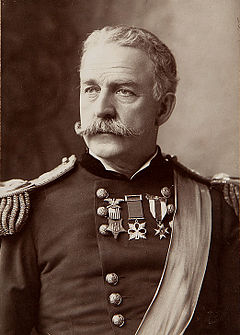
(Col. Nelson Appleton Miles)
The inevitable happened the following morning when scouts crept quietly up to the outskirts of the camp. At their position they could not see the main Tribal village but came upon the Pony heard tied up nearby. They may have preferred confirmed sightings of the main body, but finding their horses was quite enough. Without being discovered, they made their way back to report to Miles. Their quarry had been found.
So it began.... With elements of the 2nd and 7th Calvary in the lead with the 5th Infantry pulling up the rear, the order was given. The charge launched. The final battle had begun.
It was not as one might expect, reading thus far. You might think the Army had all the advantages, and you'd be right. You might think the Army had the numbers and again, they did. So what happened? The Army had green troops who didn't understand or anticipate the Indians standing and fighting. They'd been told by their commanders and others that the Indians were savages and weak. Cowards, they were and would break and run at first heavy contact. For once, it was the Army who was mistaken.
The first charge was met with devastating and accurate rifle fire from the Tribe and it stopped the charge cold, then drove it back. The Calvary retreated so quickly, they left their wounded and dying between the lines.
At the same time, as the battle started, the Calvary scouts had made a path straight to the pony pens and 'liberated' the horses. Thus, escape for the Nez Perce became unlikely if not impossible. It made their preferred tactic of hitting and running a stand and fight neither side was quite prepared to see the full result of.
In an odd side note to this, on the second day of the Battle, Yellow Bull approached the Army lines under flag of truce and representing the tribe, arranged for a peaceful meeting between Chief Joseph and Miles. Miles and Joseph met and during the brief truce both sides recovered their wounded and dead from the field between their lines. For unknown reasons, Miles then captured Joseph under the Truce flag and declared him a prisoner. In similar fashion, the Tribe grabbed a Lieutenant who had thus far been allowed to move freely in the Indian lines. An exchange was set and after some drama, both parties returned to their respective lines. The violation of a truce flag in those times was no small matter.

(Yellow Bull)
The battle lasted 5 days and it took some of the most meaningful losses of the entire fight for the Tribe. Among those killed were leaders like Looking Glass, Toohoolhoolzote and Joseph's own brother, Ollokot. The losses in numbers for these two days were not extreme by the standards of the campaign. It's esitmated 20-25 Nez Perce were killed while the Army suffered 24 losses and 23 wounded (3 died off the battlefield). The nature of the losses to the tribe and their position of no way forward, no way back and no means left to effectively fight the odds they faced left them no choice at this point.
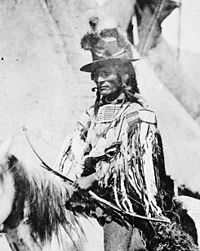
(Looking Glass)
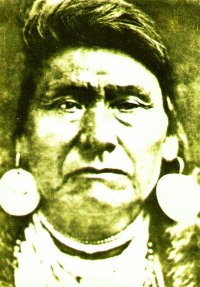
(Toohoolhoolzote)
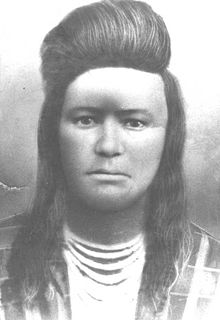
(Ollokot)

(Bear Paw Battlefield)
The Final Stand of the Nez Perce people is known as the Battle of Bear Paw. So named for the geographic location it occurred in. Here, they made their 3rd and last serious mistake in estimating their adversary. It proved to be the last mistake circumstances would permit for them.
The Nez Perce Tribe came to make camp on the Snake Creek River on Sept 29, 1877. It's a beautiful area, as most of that region is if someone has time to visit it. They were a mere 40 miles from the Canadian border and believed General Howards troops had finally given up the chase. They were totally unaware of a new threat almost upon them.
Indian Scouts under the command of Colonel Nelson A. Miles were searching frantically for the Nez Perce camp. These scouts came from the Lakota and Cheyenne Tribes which ironically were among the very same people fighting Miles just a year earlier. Now, they were his forward elements in scouting for the Nez Perce Tribe.

(Col. Nelson Appleton Miles)
The inevitable happened the following morning when scouts crept quietly up to the outskirts of the camp. At their position they could not see the main Tribal village but came upon the Pony heard tied up nearby. They may have preferred confirmed sightings of the main body, but finding their horses was quite enough. Without being discovered, they made their way back to report to Miles. Their quarry had been found.
So it began.... With elements of the 2nd and 7th Calvary in the lead with the 5th Infantry pulling up the rear, the order was given. The charge launched. The final battle had begun.
It was not as one might expect, reading thus far. You might think the Army had all the advantages, and you'd be right. You might think the Army had the numbers and again, they did. So what happened? The Army had green troops who didn't understand or anticipate the Indians standing and fighting. They'd been told by their commanders and others that the Indians were savages and weak. Cowards, they were and would break and run at first heavy contact. For once, it was the Army who was mistaken.
The first charge was met with devastating and accurate rifle fire from the Tribe and it stopped the charge cold, then drove it back. The Calvary retreated so quickly, they left their wounded and dying between the lines.
At the same time, as the battle started, the Calvary scouts had made a path straight to the pony pens and 'liberated' the horses. Thus, escape for the Nez Perce became unlikely if not impossible. It made their preferred tactic of hitting and running a stand and fight neither side was quite prepared to see the full result of.
In an odd side note to this, on the second day of the Battle, Yellow Bull approached the Army lines under flag of truce and representing the tribe, arranged for a peaceful meeting between Chief Joseph and Miles. Miles and Joseph met and during the brief truce both sides recovered their wounded and dead from the field between their lines. For unknown reasons, Miles then captured Joseph under the Truce flag and declared him a prisoner. In similar fashion, the Tribe grabbed a Lieutenant who had thus far been allowed to move freely in the Indian lines. An exchange was set and after some drama, both parties returned to their respective lines. The violation of a truce flag in those times was no small matter.

(Yellow Bull)
The battle lasted 5 days and it took some of the most meaningful losses of the entire fight for the Tribe. Among those killed were leaders like Looking Glass, Toohoolhoolzote and Joseph's own brother, Ollokot. The losses in numbers for these two days were not extreme by the standards of the campaign. It's esitmated 20-25 Nez Perce were killed while the Army suffered 24 losses and 23 wounded (3 died off the battlefield). The nature of the losses to the tribe and their position of no way forward, no way back and no means left to effectively fight the odds they faced left them no choice at this point.

(Looking Glass)

(Toohoolhoolzote)

(Ollokot)
The Surrender
The Nez Perce Tribe was not run as a Dictatorship. Indian Tribes had a unique way of handling their internal governance and it was unlike that of the White Man. Not less, but different. Very different. So it was that a debate raged on whether to surrender, attempt a breakout or conitnue fighting in place. If they chose a breakout or escape under cover of darkness, they knew they had fair odds of success. They'd done this before and succeeded when odds said it should never have been possible. However, they had a problem. That course of action, while saving the Warriors and strong among the Tribe, would leave the wounded, old and sick to the troops without defense or cover of terms.
It was while the fighting raged and artillery continued to inflict losses that a strange thing happened. Howard finally appeared and with him, came about 20 men. Among them were some of his scouts. During the Officers meeting that evening, it was discussed and decided that two scouts would approach the Indian lines first thing on Oct 5th to convince Chief Joseph to surrender.
What the scouts found upon entering the encampment was not a proud tribe, ready to fight on and full of fire. They found a tired, beaten and almost broken people. They were a Tribe battered from over 1,100 miles of running, fighting and just surviving the trail. Their run for Canada had begun with 800 people. On Oct 5th, they sat as a people numbering 431. In short, the scouts found a camp ready to surrender.
The Negotiations carried on with the scouts running messages between the Army Commanders, Miles and Howard, and Chief Joseph. Once the Chief and other Tribal leaders were satisfied they could surrender without harm to the surviving members of the Nez Perce Tribe, Chief Joseph sent a final message to the Army Commanders. This final message has been immortalized in posters, books and a major movie. It read:
"Tell General Howard I know his heart. What he told me before I have in my heart. I am tired of fighting. Our chiefs are killed. Looking Glass is dead. Tu-hul-hul-sote is dead. The old men are all dead. It is the young men who say yes or no. He who led on the young men is dead. It is cold and we have no blankets. The little children are freezing to death. My people, some of them, have run away to the hills, and have no blankets, no food; no one knows where they are – perhaps freezing to death. I want to have time to look for my children and see how many of them I can find. Maybe I shall find them among the dead. Here me, my chiefs. I am tired; my heart is sick and sad. From where the sun now stands I will fight no more forever."
Aftermath
Despite assurances that Chief Joseph and his people would be treated well upon their capture, this proved another lie and it was quickly born out. The Tribe was herded onto unheated rail cars and taken the distance to Fort Leavenworth, Kansas. There, they would remain in a Prisoner of War camp. Those remaining after 8 months of this were then herded to a new reservation in Oklahoma. There many would die of disease epidemics.
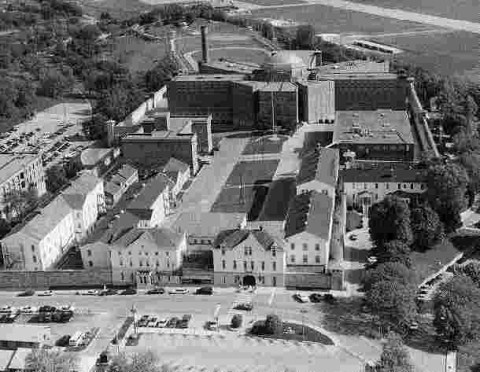
(Fort Leavenworth, Kansas)
Finally, in 1885 and after a trip to D.C. himself years earlier, Chief Joseph was finally to move back to the Pacific Northwest. Some were allowed to settle in familiar surroundings near Kooskia, Idaho. Joseph and the remainder were moved to the Colville Reservation and shared their space with 11 other Tribes forced onto the land.
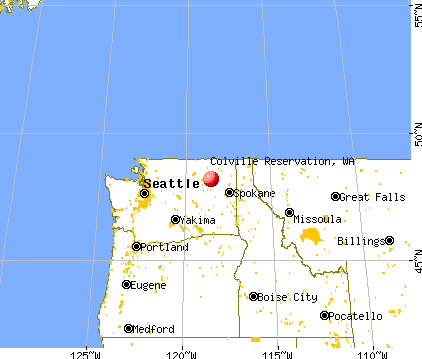
(Colville Indian Reservation)
Chief Joseph spent his final years rallying against the Injustices brought upon his people. He died in Sept, 1904 of what was described by his doctor as a "Broken Heart". Unlike so many he'd been betrayed by, he kept his word to then end and from the day he made his vow in Bear Paw, Montana....He would fight no more, Forever.
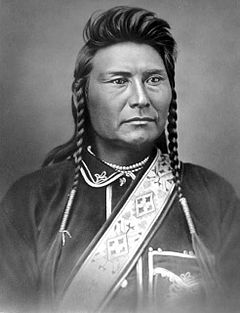
Chief Joseph
1840 - 1904
Rest In Peace,
A Great Man and Leader.
The Nez Perce Tribe was not run as a Dictatorship. Indian Tribes had a unique way of handling their internal governance and it was unlike that of the White Man. Not less, but different. Very different. So it was that a debate raged on whether to surrender, attempt a breakout or conitnue fighting in place. If they chose a breakout or escape under cover of darkness, they knew they had fair odds of success. They'd done this before and succeeded when odds said it should never have been possible. However, they had a problem. That course of action, while saving the Warriors and strong among the Tribe, would leave the wounded, old and sick to the troops without defense or cover of terms.
It was while the fighting raged and artillery continued to inflict losses that a strange thing happened. Howard finally appeared and with him, came about 20 men. Among them were some of his scouts. During the Officers meeting that evening, it was discussed and decided that two scouts would approach the Indian lines first thing on Oct 5th to convince Chief Joseph to surrender.
What the scouts found upon entering the encampment was not a proud tribe, ready to fight on and full of fire. They found a tired, beaten and almost broken people. They were a Tribe battered from over 1,100 miles of running, fighting and just surviving the trail. Their run for Canada had begun with 800 people. On Oct 5th, they sat as a people numbering 431. In short, the scouts found a camp ready to surrender.
The Negotiations carried on with the scouts running messages between the Army Commanders, Miles and Howard, and Chief Joseph. Once the Chief and other Tribal leaders were satisfied they could surrender without harm to the surviving members of the Nez Perce Tribe, Chief Joseph sent a final message to the Army Commanders. This final message has been immortalized in posters, books and a major movie. It read:
____________________________
"Tell General Howard I know his heart. What he told me before I have in my heart. I am tired of fighting. Our chiefs are killed. Looking Glass is dead. Tu-hul-hul-sote is dead. The old men are all dead. It is the young men who say yes or no. He who led on the young men is dead. It is cold and we have no blankets. The little children are freezing to death. My people, some of them, have run away to the hills, and have no blankets, no food; no one knows where they are – perhaps freezing to death. I want to have time to look for my children and see how many of them I can find. Maybe I shall find them among the dead. Here me, my chiefs. I am tired; my heart is sick and sad. From where the sun now stands I will fight no more forever."
____________________________
Aftermath
Despite assurances that Chief Joseph and his people would be treated well upon their capture, this proved another lie and it was quickly born out. The Tribe was herded onto unheated rail cars and taken the distance to Fort Leavenworth, Kansas. There, they would remain in a Prisoner of War camp. Those remaining after 8 months of this were then herded to a new reservation in Oklahoma. There many would die of disease epidemics.

(Fort Leavenworth, Kansas)
Finally, in 1885 and after a trip to D.C. himself years earlier, Chief Joseph was finally to move back to the Pacific Northwest. Some were allowed to settle in familiar surroundings near Kooskia, Idaho. Joseph and the remainder were moved to the Colville Reservation and shared their space with 11 other Tribes forced onto the land.

(Colville Indian Reservation)
Chief Joseph spent his final years rallying against the Injustices brought upon his people. He died in Sept, 1904 of what was described by his doctor as a "Broken Heart". Unlike so many he'd been betrayed by, he kept his word to then end and from the day he made his vow in Bear Paw, Montana....He would fight no more, Forever.

Chief Joseph
1840 - 1904
Rest In Peace,
A Great Man and Leader.
edit on 29-10-2012 by Wrabbit2000 because: (no reason given)
Sources and References
The following were sources and locations used for the above article:
Surrender Speech of Chief Joseph
Chief Joseph - Wiki
Ghosts on the Nez Perce Trail
The Battle of Bear Paw
Wiki Commons and the Library of Congress were helpful for imagery and some of the narrative comes from my own experience and knowledge of the area of the nation being discussed, where such observations are applicable. Everything above was typed and nothing outside a couple Indian names was copied from any other source.
I hope everyone found this interesting and a fitting tribute to who I believe was among the better men, of either side, during that period of American history.
The following were sources and locations used for the above article:
Surrender Speech of Chief Joseph
Chief Joseph - Wiki
Ghosts on the Nez Perce Trail
The Battle of Bear Paw
Wiki Commons and the Library of Congress were helpful for imagery and some of the narrative comes from my own experience and knowledge of the area of the nation being discussed, where such observations are applicable. Everything above was typed and nothing outside a couple Indian names was copied from any other source.
I hope everyone found this interesting and a fitting tribute to who I believe was among the better men, of either side, during that period of American history.
Just wanna say a great read! I grew up on an reservation in MT, and spent many a summer at Little Bighorn. Very interesting stuff in that region.
Not gonna say how terrible our government treated these humans, because it's well known. Just want to say thanks for sharing a great story of how
great a leader Chief Joseph was. I've "driven" the Chief Joseph highway around Yellowstone quite a few times, and couldn't imagine hiking that
terrain. It's amazing what they accomplished. Thanks again.
reply to post by saabster5
Thank you for taking the time to write that. Given your background and personal experience in the area, I can't imagine a better compliment to make me feel good about creating the thread. If it's done a little something to make your morning, know that your note here definitely made mine. Thanks!
Thank you for taking the time to write that. Given your background and personal experience in the area, I can't imagine a better compliment to make me feel good about creating the thread. If it's done a little something to make your morning, know that your note here definitely made mine. Thanks!
Wow, that was very sad and depressing, that a people who simply wanted the right to exist in a land that they claimed no ownership of. However, at the
same time it was somewhat inspiring. Just due to the fact that they fought so hard and lasted so long despite in-superior numbers and technology. It
proves that just spirit alone can motivate a people to fight for what they know is right. It gives me hope for the future, that despite how
insurmountable the odds might seem, just your heart can propel you to put up a fight that is much more effective than I thought would be possible on
spirit alone.
Thanks OP for putting that together in an easily understandable way, and for relating a story that I likely would have never came across.
Edit: Wish I could have come up with something more profound to say, just a little drunk is all. (I don't usually drink, it is rather rare for me.)
Thanks OP for putting that together in an easily understandable way, and for relating a story that I likely would have never came across.
Edit: Wish I could have come up with something more profound to say, just a little drunk is all. (I don't usually drink, it is rather rare for me.)
edit on 29-10-2012 by Renegade2283 because: (no reason given)
reply to post by Wrabbit2000
What a sad, sad story. Wrabbit, I never thought you could make me cry. Those poor people!
What a sad, sad story. Wrabbit, I never thought you could make me cry. Those poor people!
reply to post by littled16
I too couldn't help but shed a tear. The only other time I have cried from something on this site was when someone posted the hurricane Katrina video, where the guy had to leave his dog but the newscaster agreed to take him. I was straight bawling when I saw that, one of the saddest moments in a long while.
Also, I just had to say that your avatar is adorable.
I too couldn't help but shed a tear. The only other time I have cried from something on this site was when someone posted the hurricane Katrina video, where the guy had to leave his dog but the newscaster agreed to take him. I was straight bawling when I saw that, one of the saddest moments in a long while.
Also, I just had to say that your avatar is adorable.
reply to post by Renegade2283
I can honestly say this thread is the first time I have out and out cried my eyes out after reading something on ATS. The way our government treated the Native Americans was and continues to be horrendous. It just breaks my heart.
P.S. Thanks for the compliment!
I can honestly say this thread is the first time I have out and out cried my eyes out after reading something on ATS. The way our government treated the Native Americans was and continues to be horrendous. It just breaks my heart.
P.S. Thanks for the compliment!
reply to post by littled16
Ya, I am currently in a little problem in my state of Oregon. They want to build this new casino called "The Grange" that would be the first privately owned casino in the state. They say it will create a lot of jobs but I dont really think a new casino would be helpful since they have a history of supporting addictions and creating crime. However, the main reason many will support it is because the ads against this casino keep saying that we should keep our promise to the Native Americans, and most I have met dont think that these natives are true, so they want to vote for this new casino just in spite.
Are these natives closely related to the ones that originally existed, or are they just as new age as many of the people in the US? And even if they are, should they be allowed to continue with their casinos? I will never support private casinos, but I don't really know If I would support the Native ones either. Kinda seems like it is the least we could do for such atrocities.
I understand that this is kinda off topic, but it will be easier to ponder after having read that.
Ya, I am currently in a little problem in my state of Oregon. They want to build this new casino called "The Grange" that would be the first privately owned casino in the state. They say it will create a lot of jobs but I dont really think a new casino would be helpful since they have a history of supporting addictions and creating crime. However, the main reason many will support it is because the ads against this casino keep saying that we should keep our promise to the Native Americans, and most I have met dont think that these natives are true, so they want to vote for this new casino just in spite.
Are these natives closely related to the ones that originally existed, or are they just as new age as many of the people in the US? And even if they are, should they be allowed to continue with their casinos? I will never support private casinos, but I don't really know If I would support the Native ones either. Kinda seems like it is the least we could do for such atrocities.
I understand that this is kinda off topic, but it will be easier to ponder after having read that.
reply to post by Renegade2283
I also am not in favor of casinos and what comes with them, however casinos are a boon for Native Americans. Years ago a local tribe was offered the chance to open a casino at their reservation (my step-father belongs to this tribe). The state refused to allow it and fought it, so the casino went to a tribe in the next state. The casino has brought prosperity to not only the tribe members but to people in the surrounding communities, but the members of our local tribe are still struggling in poverty. I say let them have their casinos.
I also am not in favor of casinos and what comes with them, however casinos are a boon for Native Americans. Years ago a local tribe was offered the chance to open a casino at their reservation (my step-father belongs to this tribe). The state refused to allow it and fought it, so the casino went to a tribe in the next state. The casino has brought prosperity to not only the tribe members but to people in the surrounding communities, but the members of our local tribe are still struggling in poverty. I say let them have their casinos.
This part of American history is actually pretty fresh in my mind...although your insight greatly enriches what I read last year,
The Bitter waters of Medicine Creek...the territorial governor at the
time, Isaac Stevens, was a brutal and bitter representative of the US government....not fit for his role in Indian Affairs at all
en.wikipedia.org...
....some of the stuff that man inflicted on the Indians turned my stomach.
Thanks for enriching ATS with your research!!!
en.wikipedia.org...
....some of the stuff that man inflicted on the Indians turned my stomach.
Thanks for enriching ATS with your research!!!
edit on Mon Oct 29 2012 by DontTreadOnMe because: (no reason given)
Thank you, Littled and Renegade. I didn't mean to make anyone cry, but the story doesn't end as one would like a movie to, does it? I went back and
re-read it after getting a few hours sleep and am grateful it's been useful and enjoyable. I'd honestly sat down last night with the idea of finding
enough to frame his famous quote. They are words that carried great meaning to someone close to me who has passed on. So, I sat down to share my
general feelings through that. Before I knew it, a few hours had passed and I had far more than just a couple paragraphs to frame a quote.
Part of what I was left with in a family inheritance are the photos of years of solo summer vacations taken in the 70's to the Northern Plains and some of the very battlefields discussed above. At some point I'm going to get all of the negatives scanned from those many packs of photos. It should make an interesting set as one man visited and viewed the history in that region.
DontTreadonMe, thanks for your note. You sure know what to say to make a contributor feel like writing more soon! I can't claim to write one like this often though. There was some inspiration to this one and I'm just happy it turned out so well.
Part of what I was left with in a family inheritance are the photos of years of solo summer vacations taken in the 70's to the Northern Plains and some of the very battlefields discussed above. At some point I'm going to get all of the negatives scanned from those many packs of photos. It should make an interesting set as one man visited and viewed the history in that region.
DontTreadonMe, thanks for your note. You sure know what to say to make a contributor feel like writing more soon! I can't claim to write one like this often though. There was some inspiration to this one and I'm just happy it turned out so well.
One of the darker moments in U.S. history...
A remarkable man, and a remarkable people. Whose only crime was living in a region of wondrous beauty, and resources.
All they ever wanted was to be left alone, and to live their lives.
An example of the Nez Perce, and their allied tribes, is the following story that my grandmother told me... It was just after the Mission at Walla Walla Massacre, and needless to say, the Spokane Mission people were terrified that the tribe responsible would come north to attack them...
Well, one night, the missionaries were awakened by yips, and howls, and cries of what they thought were the Cayuse readying an attack... A sleepless night followed for the folks in the cabins.
At the rising of the sun the following morning, it's revealed that the ones making the noise were not the Cayuse, but the local Nez Perce affiliated Spokane tribe making the noises to scare off the Cayuse should they be in the area.
The thanks they got? Well, you just read it.
ETA: Well done, Wrabbit. Shedding light on these dark moments can't have been easy to do.
A remarkable man, and a remarkable people. Whose only crime was living in a region of wondrous beauty, and resources.
All they ever wanted was to be left alone, and to live their lives.
An example of the Nez Perce, and their allied tribes, is the following story that my grandmother told me... It was just after the Mission at Walla Walla Massacre, and needless to say, the Spokane Mission people were terrified that the tribe responsible would come north to attack them...
Well, one night, the missionaries were awakened by yips, and howls, and cries of what they thought were the Cayuse readying an attack... A sleepless night followed for the folks in the cabins.
At the rising of the sun the following morning, it's revealed that the ones making the noise were not the Cayuse, but the local Nez Perce affiliated Spokane tribe making the noises to scare off the Cayuse should they be in the area.
The thanks they got? Well, you just read it.
ETA: Well done, Wrabbit. Shedding light on these dark moments can't have been easy to do.
edit on 10/29/2012 by seagull because: (no reason
given)
reply to post by Wrabbit2000
Don't sweat it, your thread is great. Part of remembering our history is thinking about not only the wonderful parts but the atrocities as well. We should all be sad.
Some of my favorite childhood memories are of cross country trips, stopping at every historical sight along the way. I'm glad you were able to enjoy the same. We have MANY photo albums of our adventures as well.
Don't sweat it, your thread is great. Part of remembering our history is thinking about not only the wonderful parts but the atrocities as well. We should all be sad.
Some of my favorite childhood memories are of cross country trips, stopping at every historical sight along the way. I'm glad you were able to enjoy the same. We have MANY photo albums of our adventures as well.
This is a tough thread to read.Tough because it is so sad and disturbing to me.Thank you for writing it, this stuff needs to be told and retold.I just
wish we could learn from our terrible history, but it seems we are incapable.
It's sad really, 16 million dead Native Americans and we transformed this beautiful land into a giant Consumer Plantation.
Wrabbit, it is always a pleasure reading your posts. Posts like these are why I lurk this forum. I fear I am not versed enough in any matter to
contribute my own, but the learning experience is enough for me. Thank you sincerely for the hard work done by you, and others like you.
reply to post by Wrabbit2000
Thank you for the history lesson Wrabbit.
That was a good read and put together very well
Thank you for the history lesson Wrabbit.
That was a good read and put together very well
new topics
-
4/27/24 New Jersey Earthquake
Fragile Earth: 38 minutes ago -
Fun with extreme paints
Interesting Websites: 2 hours ago -
CIA is alleged to be operat social media troll frms in Kyiv
ATS Skunk Works: 3 hours ago -
Rainbow : Stargazer
Music: 3 hours ago -
I sleep no more.
Philosophy and Metaphysics: 6 hours ago -
Canada caught red-handed manipulating live weather data and make it warmer
Fragile Earth: 6 hours ago -
Why Files Our Alien Overlords | How We Secretly Serve The Tall Whites
Aliens and UFOs: 8 hours ago -
Curse of King Tuts Tomb Solved
Ancient & Lost Civilizations: 9 hours ago -
What allies does Trump have in the world?
ATS Skunk Works: 9 hours ago
top topics
-
Canada caught red-handed manipulating live weather data and make it warmer
Fragile Earth: 6 hours ago, 15 flags -
Why Files Our Alien Overlords | How We Secretly Serve The Tall Whites
Aliens and UFOs: 8 hours ago, 9 flags -
Curse of King Tuts Tomb Solved
Ancient & Lost Civilizations: 9 hours ago, 7 flags -
What allies does Trump have in the world?
ATS Skunk Works: 9 hours ago, 3 flags -
CIA is alleged to be operat social media troll frms in Kyiv
ATS Skunk Works: 3 hours ago, 3 flags -
4/27/24 New Jersey Earthquake
Fragile Earth: 38 minutes ago, 3 flags -
I sleep no more.
Philosophy and Metaphysics: 6 hours ago, 2 flags -
Fun with extreme paints
Interesting Websites: 2 hours ago, 1 flags -
Rainbow : Stargazer
Music: 3 hours ago, 0 flags
active topics
-
James O’Keefe: I have evidence that exposes the CIA, and it’s on camera.
Whistle Blowers and Leaked Documents • 23 • : fringeofthefringe -
4/27/24 New Jersey Earthquake
Fragile Earth • 2 • : FlyersFan -
Gov Kristi Noem Shot and Killed "Less Than Worthless Dog" and a 'Smelly Goat
2024 Elections • 86 • : budzprime69 -
President BIDEN's FBI Raided Donald Trump's Florida Home for OBAMA-NORTH KOREA Documents.
Political Conspiracies • 44 • : ADVISOR -
Supreme Court Oral Arguments 4.25.2024 - Are PRESIDENTS IMMUNE From Later Being Prosecuted.
Above Politics • 120 • : Zanti Misfit -
Manor Lords - Medieval City Builder with RTS Combat - Early Access 26th April
Video Games • 8 • : gortex -
Definitive 9.11 Pentagon EVIDENCE.
9/11 Conspiracies • 433 • : Lazy88 -
Ireland VS Globalists
Social Issues and Civil Unrest • 9 • : GeorgeVanTassel -
Hate makes for strange bedfellows
US Political Madness • 58 • : Terpene -
Biden "Happy To Debate Trump"
2024 Elections • 58 • : Zanti Misfit
